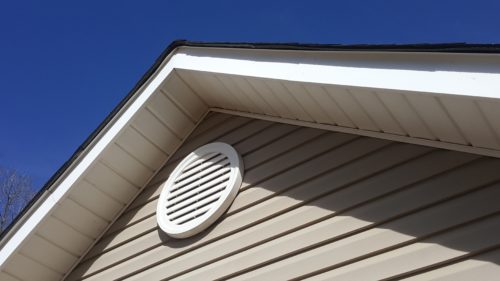The calendar officially rolls over to summer in late June, but temperatures in Orlando are already heating up. That rising heat coupled with the typical humidity of Florida can present major long-term problems for structures without adequate roof ventilation. Read on for more information about the importance of effective roof ventilation.
What Is Roof Ventilation?
Roof ventilation allows for air exchange: outside air can flow in and through your home’s attic space, taking excess heat and moisture with it. Basically, the air needs both a way in and a way out for proper airflow. Typically outside air will enter the attic space at a low spot (like a soffit) and exit at a high spot (like a ridge vent). When the roof ventilation is working effectively, it creates a proper balance of air in your attic space.
Effects of Poor Ventilation
So what happens if your home’s attic space isn’t adequately ventilated? That situation leads to the build-up of two destructive forces: moisture and heat. Working together, these two forces can wreak havoc on your home.
Moisture Build-Up
Moisture build-up, whether from ambient humidity, heavy weather, or in-home applications like showers and washing machines, is one of the worst conditions for a structure. Condensation can drip onto insulation, rendering it less effective (which compounds the heat issues discussed later). Too much condensation can even run down the ceilings and walls, damaging paint and leaving stains.
Mold and mildew, however, are even worse problems. Both thrive in the warm, damp environments that inadequate roof ventilation causes. In addition to the structural issues caused by damaged wood, both mold and mildew can lead to long-term health issues.
Heat Build-Up
Without proper roof ventilation, the heat that collects from the sun beating down on your home’s roof has no where to go. Stagnant attic air creates an oven above your living space. When your attic space becomes super-heated, a lot of that heat is transferred to the ceilings and walls of the rooms below. When those rooms heat up, your air conditioning system must work much harder to keep the space cooled. You will end up over-taxing the cooling unit and will drive up your energy bill.
The heat will also transfer up, back through your roof’s shingles. In effect, a super-heated attic space will end up cooking your shingles from below, significantly shortening your roof’s lifespan.
Contact Us at J. A. Edwards America
If you suspect that your roof is not adequately ventilated or that your shingles have been compromised due to a super-heated attic space, contact us here at J. A. Edwards America.

